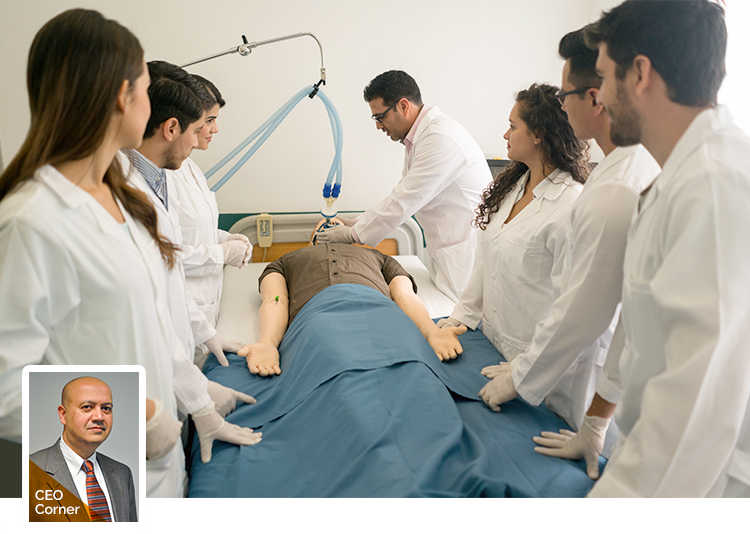Anurag Singh, EMS President and CEO, shares valuable insights on the future of simulation technology
In a recent interview, I was asked to speculate on the role of technology in training future healthcare professionals. A healthcare professional’s education doesn’t end when they graduate or pass a board certification exam. All healthcare disciplines face challenges requiring every clinician to improve knowledge, training, and skill sets.
Technology continues to revolutionize the practice of medicine including training technology that is increasingly incorporated into ongoing professional development programs. Today and in the future, clinicians face increasing pressure to master new technology and treat patients across both time and distance. Training tools must be available in real time and at their fingertips. Training on demand and training in place are no longer “nice to have” items – they’re critical requirements. Technology will play a critical role in providing the right training – at the right time.
I also believe that simulation and virtual training tools have a huge impact on the training of current healthcare professionals. Undergraduate and GME programs have already widely embraced simulation training as a core curricular component. In fact, medical training programs find it challenging to compete for students without having a robust medical simulation training program in place.
As the focus on patient safety continues to accelerate, there will be an increased emphasis on simulation training as a critical tool to measure and evaluate entrustable professional activities, or EPAs. Hospitals will no longer be willing to accept residents and new medical graduates who cannot show EPA readiness on day one. Tracking ongoing competencies over the course of an entire career will be a critical component in improving patient safety, and simulation is a critical tool in providing impactful, hands-on training– and more importantly, measuring healthcare professionals’ performance over time.

